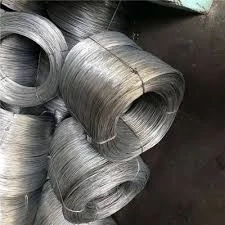Current Trends in Pricing for Welded Wire Mesh Products
Understanding the Price of Welded Wire Mesh Factors and Trends
Welded wire mesh is a versatile and commonly used material in various construction and industrial applications. It is made from a grid of intersecting wires that are welded together at their joints, resulting in a strong and durable mesh product. The price of welded wire mesh can vary significantly based on a variety of factors, and understanding these nuances can help consumers and businesses make informed purchasing decisions.
1. Material Composition
The raw materials used to fabricate welded wire mesh significantly influence its price. Typically, welded wire mesh is made from low carbon steel wire, but variations can also include stainless steel or galvanized wire. Stainless steel and galvanized options are often more expensive due to their corrosion-resistant properties, which make them suitable for outdoor or harsh environments. The diameter of the wire and the spacing between the wires also affect the overall cost, as thicker wires and more closely spaced grids provide additional strength and durability.
2. Mesh Specifications
The specifications of the mesh, including its size, gauge, and type, directly impact its price. Welded wire mesh can come in a range of dimensions and configurations tailored to specific applications, such as fencing, reinforcement in concrete, or even decorative uses. Standard sizes may be less expensive than custom configurations, but choosing the right specifications is crucial for ensuring the product meets performance requirements.
price of welded wire mesh

The manufacturing techniques employed to produce welded wire mesh can also affect costs. Automated processes can reduce labor costs and production times, resulting in a lower price for the consumer. However, high-quality mesh that requires intricate manufacturing techniques may come at a premium. Additionally, production volumes can impact pricing; bulk orders typically result in lower per-unit costs due to economies of scale.
4. Market Demand and Supply Chains
Like any commodity, the price of welded wire mesh is also influenced by market demand and the broader economic environment. During periods of high construction activity, for instance, demand for welded wire mesh may surge, leading to price increases. Conversely, during economic downturns or periods of reduced construction, prices may stabilize or decrease. Supply chain issues, including fluctuations in raw material prices and transportation costs, also play a critical role in determining the final pricing of welded wire mesh.
5. Geographic Variations
Geographic location is another factor impacting the price of welded wire mesh. Prices may vary between regions due to differences in local demand, availability of raw materials, and shipping costs. Urban areas with higher construction activity may see increased mesh prices compared to rural areas. On the other hand, local manufacturers may offer more competitive pricing if raw materials are readily accessible.
6. Conclusion
In summary, the price of welded wire mesh is influenced by a combination of material composition, mesh specifications, manufacturing processes, market dynamics, and geographic factors. When considering a purchase, it is essential for consumers and businesses to assess their specific needs and the intended application of the welded wire mesh. By understanding the various factors that contribute to pricing, buyers can make knowledgeable decisions, ensuring they obtain the right product at a reasonable price. As market trends evolve, keeping an eye on these factors can help stakeholders adapt and optimize their purchasing strategies in the fluctuating price landscape of welded wire mesh.
-
Space-Saving Chain Fence Hacks Vertical Gardening with Cyclone MeshNewsJul.16,2025
-
Innovations in Iron Nail Wire Production for Modern ConstructionNewsJul.16,2025
-
Creative Uses of Wire Netting Fence in Modern Landscape DesignNewsJul.16,2025
-
Barbed Wire Fence Innovations in Anti-Climb TechnologyNewsJul.16,2025
-
Architectural Uses of Umbrella Nails for Aesthetic Roof DesignsNewsJul.16,2025
-
Architectural Uses of Razor Barbed Wire in Secure Urban DesignNewsJul.16,2025




